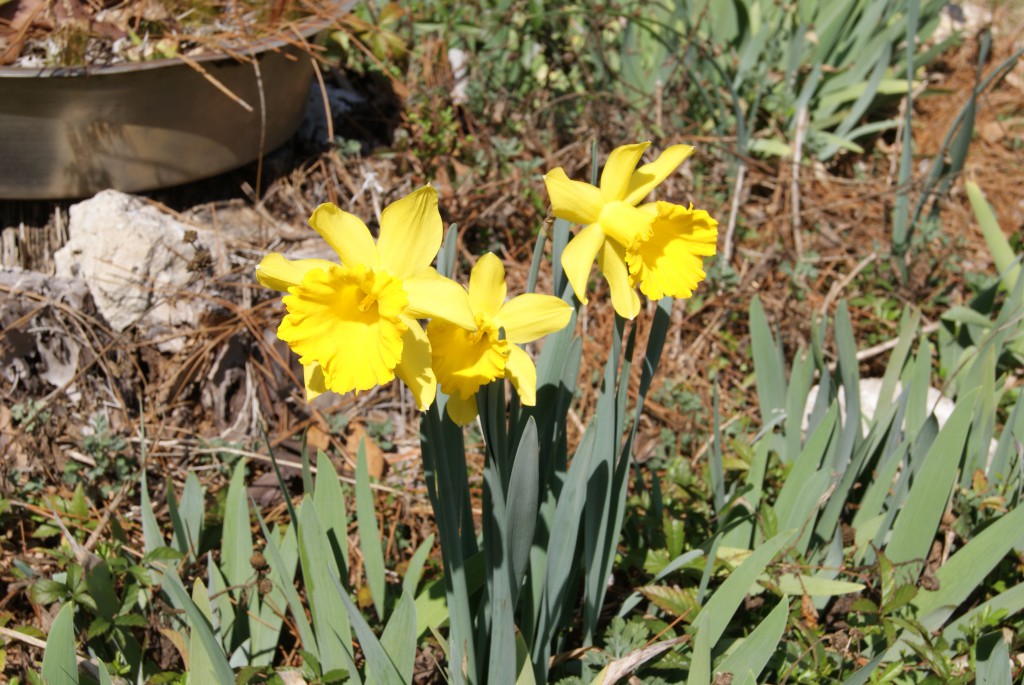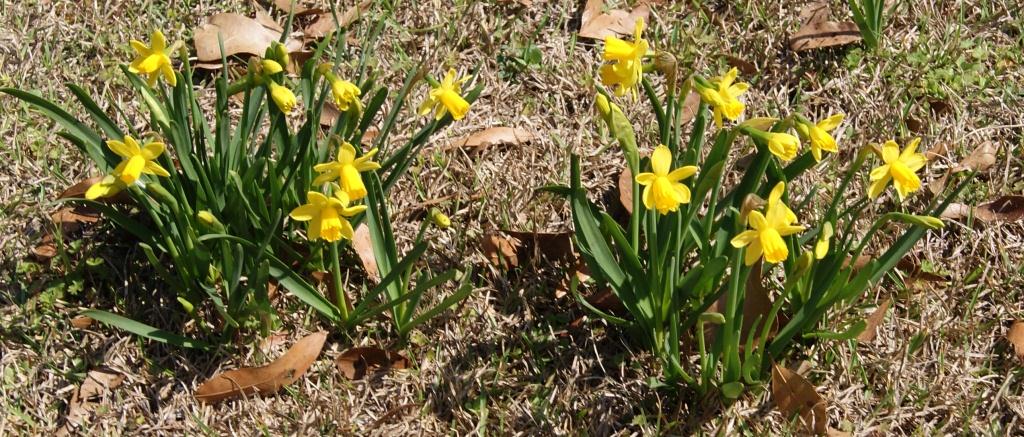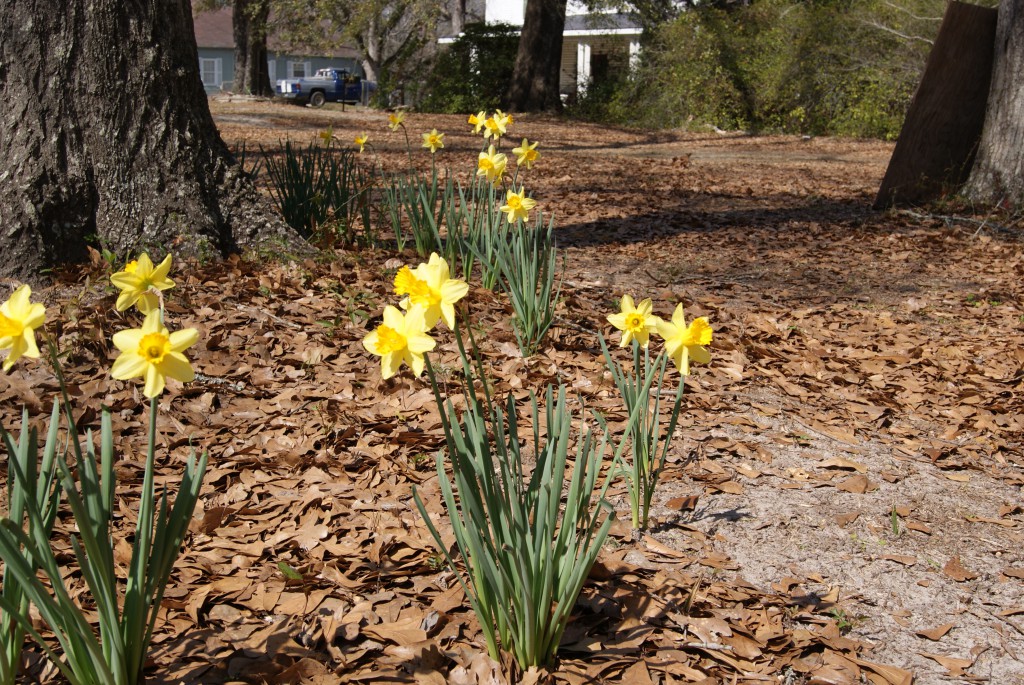Few plants seem to signify the freshness of spring quite as well as daffodils. The name “daffodils” is derived from “addodell” a variant of Asphodel (a plant of the Asphodelus genus.) In historical documents and the common language of 16th century Europe, the term “daffodil” referred specifically to the wild daffodil, Narcissus pseudonarcissus.
The derivation of the Latin narcissus is unknown. It is frequently linked to the Greek myth of Narcissus, who was rumored to be so obsessed with his own reflection that he died while gazing at himself in a pool of water. From the location of his death sprang the narcissus plant. Another Greek myth finds Persephone, daughter of the goddess Demeter, lured to her doom by the God Hades while picking a narcissus. Therefore the plant is perceived as a symbol of vanity in some Western culture.
Others attribute the plants’ name to its narcotic properties. One translation of the Greek name is “I grow numb!” All narcissus species contain the alkaloid poison lycorine, mostly in the bulb but also in the leaves. Members of the Amaryllidaceae family contain unique types of alkaloids. They are responsible for the poisonous properties of a number of the species. Of the 200 different chemical compounds found in this plant family, at least 79 of them can be found in narcissus.
Daffodils are a popular potted plant for cut flowers, but also make attractive naturalized groundcovers in gardens and around trees, providing color from the end of winter through late spring. If the narcissus blooms on Chinese New Year, it is said to bring wealth and good fortune throughout the year. The flower color varies from white through pinks and yellows to deep reddish-orange with multiple petal forms. Hundreds of cultivars are available.
Planting dates vary according to geographical location, but bulbs are usually planted in the fall when the soil is cool. Daffodils grow well in full sun or light shade, with the blooms lasting longer when protected from the noon day sun. When selecting a location for planting, it should be noted that the individual flowers will face the sun.
Pre-chilled bulbs should be planted in 6-8” deep holes with a tablespoon of slow release fertilizer added to the soil directly under the bulb and with 4-5” of soil covering the bulb. Watering throughout the winter will be necessary if rains are infrequent. After flowering, the daffodils need to be fertilized and watering should continue. The foliage will naturally turn yellow and die as stored food is restored to the bulb.
Division, transplanting and collection for forcing potted plants can be done after all the foliage has declined. To force Daffodils to bloom at varied times in a container the dried bulbs will need to be stored at a 45° F temperature for 4-6 weeks prior to being placed in the sun to grow.
The bright, cheery Daffodil flowers are beginning to bloom now and will continue as Easter approaches, reminding us that spring really is coming.
- Watch for “Melting Grass” - February 19, 2025
- Palms Can Suffer in the Cold - January 30, 2025
- Camellia Care - January 9, 2025



